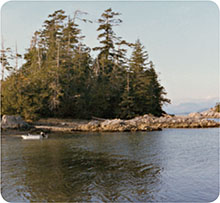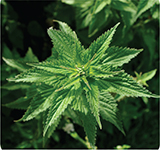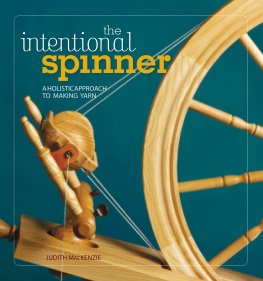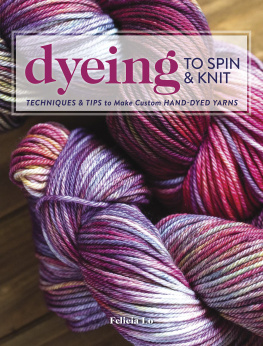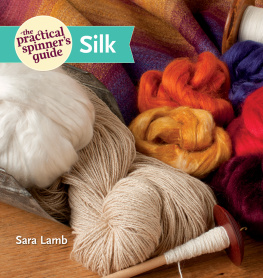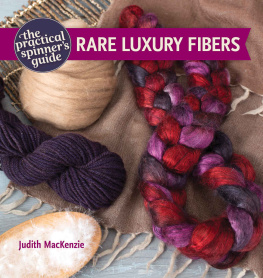Contents
Guide

A HOLISTIC APPROACH TO MAKING YARN
JUDITH MACKENZIE MCCUIN


contents
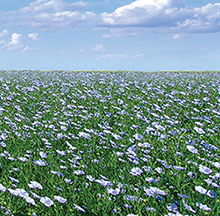
Photo by Flax Council of Canada

Photo by Anne Merrow
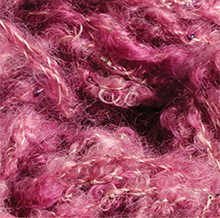
Photo by Joe Coca
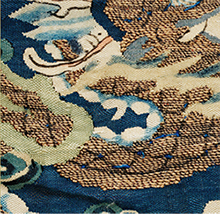
Photo by Joe Coca
introduction
AS A YOUNG WOMAN, I raised my children on a little island off the west coast of Canada. It was an idyllic life. We lived on the edge of the beach in a little cottage coveredand probably held uprightby roses. I could watch otters and orcas from my studio windows while I spun and wove.
Before my children and I came, the people who lived on this land immigrated from England, traveling round the Horn in a sailing ship. They braved the roughest water on earth, hoping to find a new life in a new world. They brought with them their linens, china, carriage horsesall the accoutrements of a civilized life in the 1800s. They brought apple-tree cuttings kept alive on the voyage stuck in raw potatoes, lavender and poppy seeds, rhubarb and roses, all a wild tangled garden when I arrived with my cat, a loom, a spinning wheel, and my two small children.
But long before the first European settlers, other people lived here who had also made a perilous journey to find a new home. They traveled across the open grasslands between Russia and Alaska and down the rim of glacier-free land along the seacoast to where my cottage sat. Over thousands of years, they created a midden that eventually formed the foundation for my home. They carved stone vessels and pestles, made magical petroglyphs. Because textiles leave no surviving shards, we cant know the full extent of their textile use, but we do know from their tools and textile artifacts that they spun and wove.
On my little island, across from the stone church on the road to the ferry landing, a rock ledge slopes down toward the sea. Just below the high-tide line is a perfect round pool about 15 feet across, carved in stone by thousands of years of retting nettle. Along with the towering cedar trees that once swept the shoreline, nettle was a main fiber staple of the area. In the rich soil and gentle climate of the Pacific Northwest, nettles are still abundant and often grow several feet taller than my head.
Nettles were collected in early fall and dried over the winter. In the warm late spring and summer, rain filled the depression in the rock and was heated by the sun. Bundles of dried nettle would be laid in the warm rainwater. Sitting across from one another around the pool, women held a long cedar plank that was flat on the top and curved on the bottom. They pounded the nettle stalks to release the strong bast fibers between the outer coating of vegetable material and the pithy inner core.
After washing the loosened materials away in the salty water of the tide, they stretched the nettle fibers to dry on the thorny dog-rose bushes. Day after day, they pounded and rinsed and dried, until only the long, silky nettle fibers were left. Gradually, the natural depression was enlarged and shaped by the motion of the cedar boards. Thousands of years of pounding nettle carved this perfect stone bowl on the edge of the sea.
Nettle was the fabric of their life. Spun into a firm two-ply by thigh-spinning or spindle-spinning, nettle was used to make incredibly durable fishnets, traps, and weirs to harvest the fish that formed the main staple of their diet. Baskets of cedar, cherry bark, and nettle were used for food collection and storage. Because the steadily wet climate along the Pacific Coast made the use of animal skins impractical, these fibers also formed the basis of their clothing. Early people on the West Coast created capes, wraps, and hats from the fibers around them.
I learned about spinning nettle long before I found the stone pool on my island, even before I learned to spin, from one of the wonderful stories my grandmother told. It was a magical tale about a young womans quest to rescue her seven brothers, who had been turned into swans by their evil stepmother. To rescue them, the young woman had to collect nettle, spin it into yarn, and knit seven shirts out of the nettle yarnall the while remaining mute.
Many adventures later, her muteness (and perhaps her knitting) caused her to be tied to a stake on the village green to be burned as a witch. But she continued to knit. Seven swans flew over the village on their spring return to the north and circled her. She threw the shirts up to them, and they turned back into handsome young princes and saved the day. They lived happily ever after, even the youngest prince, who had feathers instead of fingers on his left hand. His sister didnt have quite enough nettle yarn to finish the sleeve of his sweater!
Apart from fairy tales, nettle was an important fiber for early European cultures. Using methods similar to those from the Pacific Northwest, nettle was harvested and spun to make strong, long-wearing yarns. In many European cultures, nettle fiber was considered to be stronger than flax. It was used for many of the fabrics that flax is now used for (clothing, sailcloth, ropes, household linens), but most often for making fishnets; in fact, the word net is derived from nettle. Nor does the story of nettle end in Northern Europe. Years ago, I found an ancient Chinese tapestry that shows dragons coming out of the sea and flying through clouds. Each dragon is ornately woven from a textured nettle thread. China and India have a long history of nettle textiles, and I have recently seen elegant nettle fabrics from Nepal.
The nettle story forms a circle of sorts, the type of circle that has always seemed to me full of mystery and wisdom. The paths of plants, animals, and humans crisscross the planet, intersecting and interconnecting, creating a beautiful and intricate pattern. It reminds me that we are infinitely more similar to one another than we are different.
In the creation myths from many cultures, a spinner is a symbol of creation and change. And here, in the modern world, a love of textiles forms a web that connects us beyond the limitations of gender, race, and belief systems.
The history of fibers and spinning is the history of the world; handspinners have a lineage that stretches back through time, linking us to thousands of years of spinning technology and knowledge. The forces at work in the world and in your fibers are constant and steadfast, shaping your hands and your work as they have always.
Judith MacKenzie McCuin
